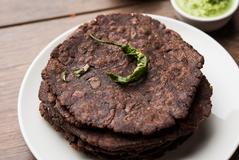Millet biryani, anyone? A few years ago, people would have likely answered this with a question of their own – what is millet? Not anymore. The small grains, whose cultivation dates back to the Indus Valley Civilization, are enjoying a resurgence as sustainable foods offering a range of health benefits. This renewed popularity comes at a time when research about diabetes and obesity has raised doubts about the nutritional value of rice. If you are wondering whether millets can replace rice in your everyday meals, you are not alone. But the answer to the rice versus millet debate is hardly simple.
What is Rice?
From idlis to mein fun (also spelled mei foon) noodles, rice is an essential ingredient in countless recipes and one of the most widely consumed staple foods in the world. Statistical studies suggest that approximately 490.27 million metric tons of rice were consumed worldwide in the 2018/2019 crop year. Rice is also processed into flour and other derivative products.
While refined white rice is the most frequently consumed variety, the grain is also available in unprocessed and indigenous varieties, such as the Matta rice consumed in Kerala or Chak-hao, a black rice variety grown in Manipur.
What are Millets?
Millet is a term used to describe a group of plants that produce small seeds that can be consumed as grains. Some millet varieties are immensely popular, such as ragi (finger millet), bajra (pearl millet) and jowar (sorghum). But there’s more to millets than just these three – such as small varieties of foxtail millet, little millet, proso, kodo and barnyard millet.
The popularity of rice and wheat in the 20th century diminished the popularity of millets. However, the grains continue to be used in many local food cultures. The ragi mudde is integral to Karnataka while jhangore ki kheer is a Pahari recipe made using barnyard millet. Their popularity is now on the rise, as consumers turn towards ancient and indigenous food cultures to seek healthy, sustainable alternatives to refined and over-processed grains in their diet.
What should you eat?
Research on the health effects of rice has shown that its high GI (glycaemic index) content can raise the chances of type 2 diabetes and insulin resistance. Over-consumption of the grain has also been linked to obesity. Though it is a great source of energy, processing rice diminishes a significant chunk of its nutritional value.
In comparison, many varieties of millets have a far lower GI content, making it an ideal alternative for meals. Additionally, every variety has its benefits – research has shown that ragi boasts high calcium content, foxtail millet offers a protein boost and pearl millet has the highest folic acid content among all cereals.
Should millets replace rice in our everyday diet, for the sake of better health and nutrition? Not quite. Include both millet and rice in your meals. Replace white rice with indigenous varieties in some of your meals. Foxtail and little millets also make for deliciously refreshing replacements in rice-based dishes. Include millets in your breakfast and snacks. If your change in diet is led by specific health concerns, a nutritionist will help you create a balanced food chart.
Rice and millets are often pitted against one another, but the key to preventing lifestyle diseases and staying fit is a mindfully-planned diet and not replacing one grain entirely with another.

|

